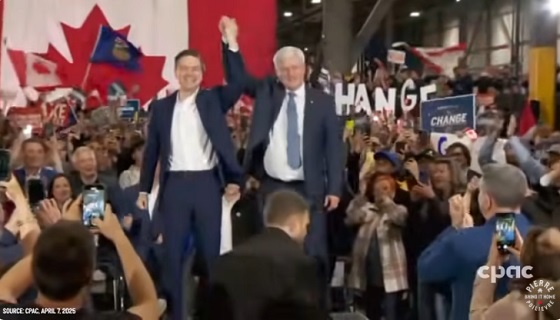Sports
Female boxer steps down from Quebec championship fight after being told opponent is a man
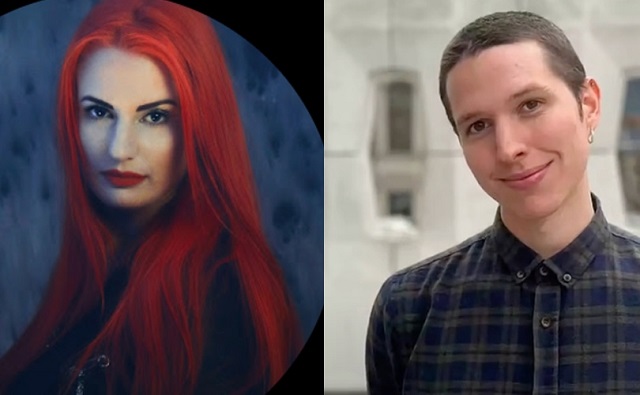
Dr. Katia Bissonnette and ‘Mya’ Walmsley
From LifeSiteNews
Dr. Katia Bissonnette’s male opponent criticized her for speaking to the press about why she didn’t want to fight him
A female boxer withdrew from a Quebec championship fight after learning that her competitor was a man claiming to be a woman.
On November 15, Dr. Katia Bissonnette revealed why she stepped down from the 2023 Provincial Golden Glove Championship in Victoriaville, Quebec upon discovering that her opponent, “Mya” Walmsley, is a biological male just hours before she was set to fight him. Bissonnette had been set to face him during the October 27 and 29 competitions.
“I came down from my hotel room to head towards the room where all the boxers were warming up,” Bissonnette told Reduxx. “My coach suddenly took me aside and told me he received information by text message, which he had then validated, that my opponent was not a woman by birth. We did not have any other additional information.”
It was safety concerns which caused her to withdraw from the match: Bissonnette cited a 2020 study by the University of Utah which revealed the differences between strength in men and women. The research showed that “a male blow has 163% more impact than a women’s, even adjusted for weight.”
“In the group studied, the weakest man remains physically superior to the strongest woman,” Bissonnette added.
She explained that if men are allowed to compete against women in combat sports, women will soon leave the sport rather than fight against men.
“Women shouldn’t have to bear the physical and psychological risks brought by a man’s decisions regarding his personal life and identity,” Bissonnette continued. “There should be two categories: biological male and female.”
According to Bissonnette, Boxing Canada rules forbade the Quebec Boxing Federation from informing competitors if they will face biological men who claim to be women to prevent the men from being “discriminated against.”
“However, after confirmation, this policy only applies when a sex change has taken place before puberty,” she explained.
Walmsley, an Australian, moved to Canada two years ago to attend Concordia University. His fight with Bissonnette would have been his first recorded fight in Canada against a woman. It is unclear if he fought in the women’s category in Australia.
“[Walmsley] would have boxed as a man in Australia,” Bissonnette said. “In Quebec, on his file, it is mentioned that he had 0 fights as a woman.”
The Quebec Boxing Federation justified their decision by saying that they had chosen an appropriate referee for the match. Following Bissonnette’s withdrawal from the competition, Walmsley won by default.
However, Walmsley did not seem content with his victory, instead condemning Bissonnette for speaking to the press about Walmsley being a male, and Bissonnette’s decision not to fight.
“Rather than turning to me, my coach or the Quebec Olympic Boxing Federation for more information, she decided to turn directly to the media to out me,” Walmsley whined.
“This kind of behavior puts athletes at risk of being excluded or receiving personal attacks based on hearsay … I am afraid that this type of accusation could eventually be used to delegitimize athletes in the women’s category and justify arbitrary and invasive regulations,” he continued, apparently choosing not to address Bissonnette’s safety concerns.
Indeed, Bissonnette’s concerns are well founded in both scientific research and incidents where women did face biological men claiming to be women in combat sports.
A notorious case is that of Fallon Fox, a male cage fighter who claims to be a woman, who openly posted about how he enjoys hurting women in his fights.
“For the record, I knocked [two] women out,” he bragged, in response to criticism for participating in the women’s division of the violent sport.
“One woman’s skull was fractured, the other not. And just so you know, I enjoyed it. See, I love smacking up TE[R]Fs in the cage who talk transphobic nonsense. It’s bliss. Don’t be mad,” he gloated.
TERF, which stands for “trans-exclusionary radical feminist,” is an insult used by transgender activists to describe any woman who will not say that biological males are, or can become, women.
Many female athletes are standing up to the LGBT mob to reclaim women’s sports for biological women.
One champion is former University of Kentucky and All-American swimmer Riley Gaines. She has made dozens of media appearances in recent years, bringing attention to the NCAA’s decision to allow William “Lia” Thomas to swim against females. Predictably, Thomas went from being one of the lowest-ranked male swimmers in the country to an above-average female one, even winning the 500-yard freestyle national championship.
Bruce Dowbiggin
Bettman Gives Rogers Keys To The Empire. Nothing Will Change
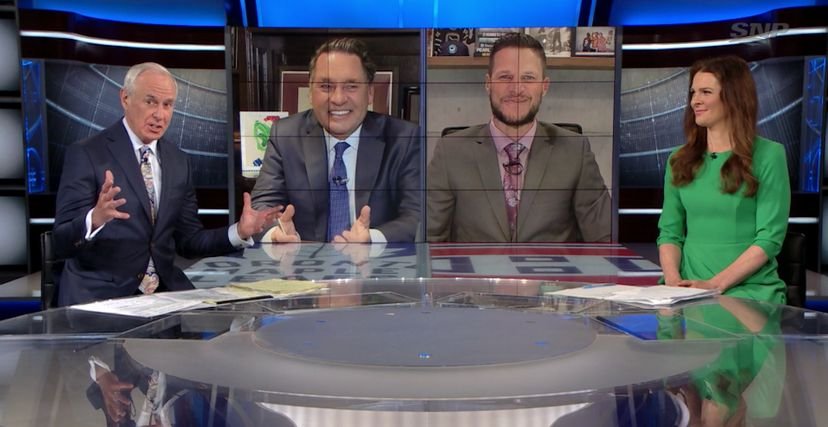
Good news if you like the way Rogers Sportsnet covers hockey in Canada. You’re about to get a whole lot more of it. In a move that sums up Gary Bettman’s unique broadcast philosophy the NHL has awarded the Canadian TV/ digital/ streaming rights to Rogers for the next 12 years. The price tag? 12 billion U.S. dollars (about $16.B CDN dollars).
While the pattern in modern sports broadcasting rights has been toward sharing the wealth among competing bidders— the NFL has six distinct partners— Bettman the contrarian has opted for a different notion. He’s all in with one Canadian partner, and let his critics STFU.
As opposed to the previous CDN national monopoly awarded to Rogers in 2013 this one bestows national rights in all languages across TV, streaming and digital for all regular-season and playoff games, plus the Stanley Cup Final and all special events. This extends to coverage in all regions. There are some concessions for Rogers to sell limited cutout packages, such as the Monday Night Amazon package they’ve created.
Presuming Pierre Poliievre doesn’t get his way with CBC, Rogers will likely piggyback on their time-sharing agreement for Saturday Hockey Night In Canada to get CBC’s network reach. (There remain many hockey fans who still think CBC has the NHL contract. Go figure.)
Translation: there will be no regional packages for TSN to produce Montreal Canadiens, Ottawa Senators or Toronto Maple Leafs games, for instance. But there will be regional blackouts, because nothing says we are proud of our product like denying it to a larger audience. Conn Smythe would be proud.
At the presser to announce the deal Rogers and Bettman were coy about how much they will charge consumers for the honour of being inundated by content in what now seems likely to be a 36-team league by the time the deal expires. Will costs be added to cable/ satellite packages? How much for streaming? With stories circulating that Rogers massively overbid for the package to get the monopoly it’s apparent that the phone company will be turning over every nickel to make it worthwhile.
Fans are apprehensive and over-saturated with hockey content already. For that reason, the NHL is now desperately looking for ways to lessen the tedium of the 82-game regular schedule with midseason content like the 4 Nations Cup or a World Cup format. In Canada’s hockey-mad environment Rogers will have a passionate market, but even the most fervent fans will only spend so much for their fix.
Already, Rogers is trumpeting its re-acquisition with commercials featuring Ron Maclean doing his breathy feels-like-home voice about how Sportsnet is the natural landing spot for hockey until many of us are dead. Bettman made cooing noises about Rogers’ commitment at the announcement.
But let us cast our minds back to 2013 when the last Rogers/ NHL deal was concocted. We were the sports media columnist at the Mop & Pail at the time and much was made that Rogers would be a technological marvel, re-inventing the way we watched hockey. There would be new camera angles, referee cams, heightened audio, refreshed editorial content etc.

As hockey fans now know Rogers dabbled in the brave new world briefly, blanched at the cost of being creative and largely went back to doing hockey the way it had always been done. Taking no risks. On some regional casts that meant as few as three or four cameras for the action.
But if you were expecting dashboard cameras and drone shots you were sadly disappointed. Similarly there was a brief stab at refreshing the pre-, mid- and postgame content. Hipster George Stromboulopoulos was brought in as a host to attract a larger female audience.
But pretty soon Strombo was gonzo, replaced by the anodyne David Amber (whose dad was once the leader of the journalist union at CBC). Women like former player Jennifer Botterill were brought in to change the gender balance on panels. They then acted pretty much like guys, chalk-talking viewers into numbness. Appointment viewing has become a fallback choice.
The move away for anything controversial came in 2019 with Rogers’ axing of Don Cherry’s Coach’s Corner in a flap over the former coach’s continuing ventures into political or cultural content. Maclean slipped the knife into his meal ticket and continued on the show. After time in limbo, doing location shoots, he was returned full-time to the desk.

As we wrote in June of 2022, the one exception to the standard “serious, sombre, even a touch grim” tone is former defenceman Kevin Bieksa. “Bieksa has been a moveable feast. His insouciance with media has become his ragging on the fellow panelists during intermissions that used to be as much fun as skating in July.” His banter with “insider” Elliotte Friedman is now a lone concession to wit on the show.
Intermissions are numbingly predictable, and Rogers’ stable of analysts and play-by-play announcers outside of HNIC is unchallenging to the orthodoxy of PxP being a radio call over TV pictures. Name one star beside Bieksa that has been produced by Rogers’ “safe” broadcast style since 2013. They’d fit in perfectly in a 1980s hockey broadcast. Now compare it with the lively Amazon broadcasts hosted by Adnan Virk and Andi Petrillo.
This leaves a lingering question. What happens to TSN? Many prefer the editorial and studio profile of TSN on Trade Deadline Day or Free Agent frenzy. TSN locked up its stars such as James Duthie and Bob McKenzie when the last deal was signed. But there isn’t enough live content this time to support keeping a full roster anymore. Who will stay and who will go? (TSN’s president Stewart Johnson is the new commissioner of the CFL).
And with Rogers taking full control of MLSE (Maple Leafs, Raptors, Argos, Toronto FC) TSN is left with the CFL and packages of NFL, golf, tennis, some auto racing and international soccer. Is that enough on which to float a network? There have been rumours that Bell, owner of TSN, is interested in divesting itself of the high cost of sports broadcasting. Should that happen— who has the money to replace them?— the effect will be seismic in Canadian broadcasting.
For now, watch how much pressure the NHL puts on Rogers to up its game. More importantly what will happen when Bettman finally retires and the league has a new vision since 1992? Rogers has sewn up its end. Will the audience go with them?
Bruce Dowbiggin @dowbboy is the editor of Not The Public Broadcaster A two-time winner of the Gemini Award as Canada’s top television sports broadcaster, his new book Deal With It: The Trades That Stunned The NHL And Changed hockey is now available on Amazon. Inexact Science: The Six Most Compelling Draft Years In NHL History, his previous book with his son Evan, was voted the seventh-best professional hockey book of all time by bookauthority.org . His 2004 book Money Players was voted sixth best on the same list, and is available via brucedowbigginbooks.ca.
Bruce Dowbiggin
Are the Jays Signing Or Declining? Only Vladdy & Bo Know For Sure

We were watching the Los Angeles Dodgers home opener on Thursday. The defending World Series champs came from behind to beat Detroit 5-4. The big hit was a three-run homer from a player named Teoscar Hernandez off AL Cy Young winner Tarik Skubal

If that name sounds familiar, Teoscar was a Toronto Blue Jay from 2018-2022. He pounded 121 homers in the span as part of the Jays’ order. But when Toronto decided it needed bullpen help he was traded to Seattle in 2022 for pitchers Erik Swanson and Adam Macko. While Swanson has battled injuries and Macko is no-go, Hernandez keeps pounding the ball.
In his one year in Seattle he had strikeout problems but did hit 26 homers with 93 RBIs. In the winter of 2023-24 he signed as a free agent with the aforementioned Dodgers. Batting behind Shohei Ohtani he launched 33 homers and 99 RBIs. He won the All Star Home Run Derby. His key hit in Game 5 of the World Series propelled L.A. to the title. The stacked Dodgers liked him enough to give him a three-year, $66 million contract.
Why are we telling you this? Because the Blue Jays also started their 2025 season at home, matched against the Baltimore Orioles. And while there are reasons to believe the Jays will not replicate their 74-win disaster of 2024, there remain the old bugaboos of injuries and pitching. In the four games against the division rivals they need to beat, Jays’ pitching gave up 24 runs while scoring 18—nine of them in one game.
The splashy acquisition of 40 year old HOF pitcher Max Scherzer has already gone sideways as a bad thumb has put him on the IL. The new stopper, Jeff Hoffman, was rejected on medical grounds by two other teams before Toronto’s money made him healthy. The rest of the bullpen— a disaster in 2024— got off to a rocky start with Orioles hitters playing BP against them. They’ve already DFA’d one pitcher and called up two more from the minors. The re-made pen performed well in Game 4, but how it holds up in their next 158 games is a mystery.
On offence, while their rivals in Boston and New York added sexy pieces to their rosters the Jays were only able to acquire veteran switch-hitting Baltimore slugger Anthony Santander. More typical of their other signees is ex-Cleveland 2B infielder Andres Giminez who in 2023 had the lowest average exit velocity of all AL batters (84.8 mph), and led the AL in percentage of balls that were softly hit (21.7%). He does play a slick second base.
The winter story line for the Jays offence was what to do about Vladimir Guerrero Jr. and Bo Bichette, the erstwhile star-dust twins who were— along with Cavan Biggio— supposed to guarantee titles when they emerged in 2019. Biggio is gone, so the other two carry the credibility of the management team of Mark Shapiro and Ross Atkins. From the outside the Jays seem paralyzed to act.

While the Jays dithered, the price for players like Guerrero and Bichette soared. Using Juan Soto’s Mets $765 M deal as a yardstick Guerrero turned down a Jays offer of just under $600 M, saying he was done talking during the season. If Shapiro/ Atkins had anticipated the market Guerrero would have cost a lot less in 2023-24. If there is no progress by the trading deadline the Jays will be forced to get what they can in a trade.
Shortstop Bichette— a gifted player who battled injuries in 2024—is likewise up for a new deal. He has started strong in 2025 and would command a handsome return in a trade. He says the Jays are waiting to see what happens with Guerrero first. Having sold the pair for years to their loyal fans, having to trade them will be a massive PR blow. And while Jays’ national audience can be an advantage, having a whole country pissed with you is devastating.
The rest of the secret sauce for a Toronto comeback revolves around one of their hitting prospects taking a step forward. Any/ all of Will Wagner, Alan Roden, Addison Barger or Leo Jimenez can have a job if they show their bats are for real. Otherwise Shapiro and Atkins will hope that Dalton Varsho, George Springer and Alejandro Kirk can find a little magic in their aging bats.
A failure to retain talent may prompt fans to recall that Rogers decided that Shapiro and Atkins, who dumped Teoscar, were worthy replacements for the previous GM who’d walked away. The man Schneider and Atkins were hired to improve upon— Canadian Alex Anthopoulos— has made the Atlanta Braves a dominant team. Since AA moved to Atlanta they’ve won 90, 97, 38 (Covid year), 88, 101, 104, 109, 89 games. They’ve won a World Series and two other playoff series. They won six straight NL East titles before injuries sank them last year.
The Braves have developed young everyday superstars like Ronald Acuńa Jr. who don’t get picked off second base. They have built a pitching staff largely from within, not splashy FA signings. They have swagger without cockiness. They are set for years to come.
The Blue Jays? Since AA left they’ve won 73, 67, 32 (Covid), 91, 92, 89, 74 games. They’ve won zero postseason games while missing the playoffs in four seasons. The players they traded are starring for other teams in the postseason. They are again employing an inexperienced company guy as manager.
While it’s true that the sun can’t shine on the same team every day, Jays fans believe it would be nice if the great orb would find their club as it did back in the 1992/93 World Series days. Instead of the reflected glory of past stars winning for other teams. Patience is thin. And time is ticking.
Bruce Dowbiggin @dowbboy is the editor of Not The Public Broadcaster A two-time winner of the Gemini Award as Canada’s top television sports broadcaster, his new book Deal With It: The Trades That Stunned The NHL And Changed hockey is now available on Amazon. Inexact Science: The Six Most Compelling Draft Years In NHL History, his previous book with his son Evan, was voted the seventh-best professional hockey book of all time by bookauthority.org . His 2004 book Money Players was voted sixth best on the same list, and is available via brucedowbigginbooks.ca.
-

 2025 Federal Election2 days ago
2025 Federal Election2 days agoRCMP memo warns of Chinese interference on Canadian university campuses to affect election
-

 2025 Federal Election1 day ago
2025 Federal Election1 day agoResearchers Link China’s Intelligence and Elite Influence Arms to B.C. Government, Liberal Party, and Trudeau-Appointed Senator
-

 Business2 days ago
Business2 days agoTrump raises China tariffs to 125%, announces 90-day pause for countries who’ve reached out to negotiate
-
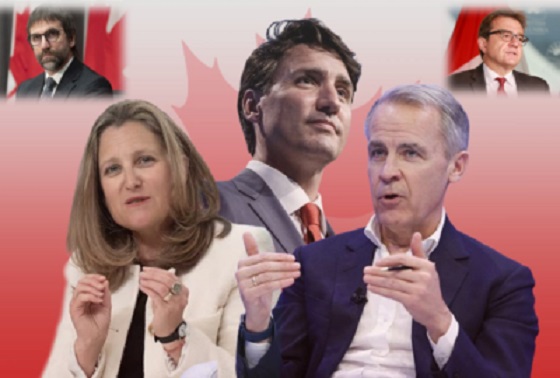
 2025 Federal Election2 days ago
2025 Federal Election2 days agoThe status quo in Canadian politics isn’t sustainable for national unity
-
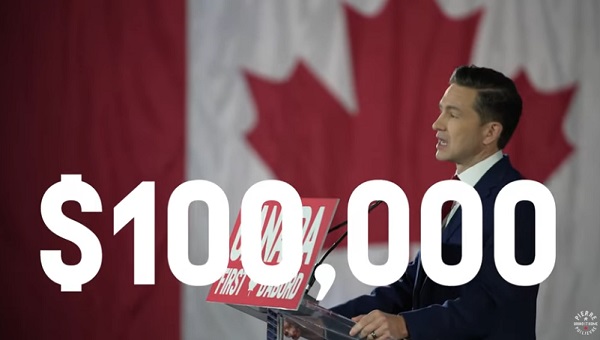
 2025 Federal Election1 day ago
2025 Federal Election1 day agoPoilievre Announces Plan To Cut Taxes By $100,000 Per Home
-
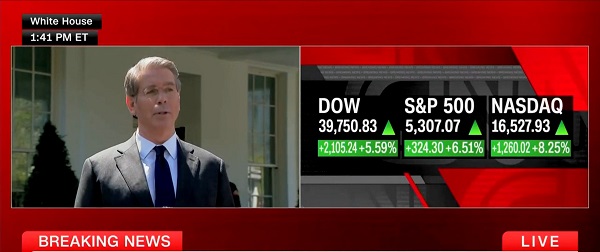
 Business2 days ago
Business2 days agoScott Bessent Says Trump’s Goal Was Always To Get Trading Partners To Table After Major Pause Announcement
-
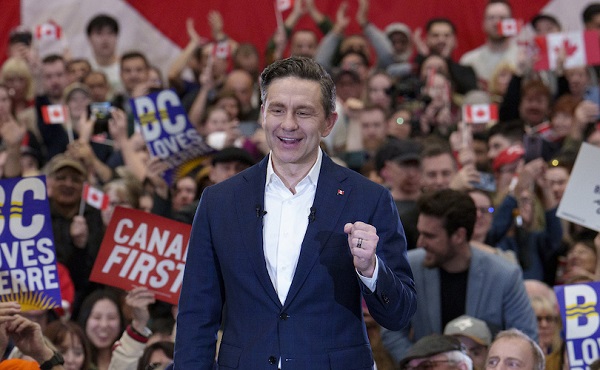
 2025 Federal Election1 day ago
2025 Federal Election1 day agoTwo Canadian police unions endorse Pierre Poilievre for PM
-
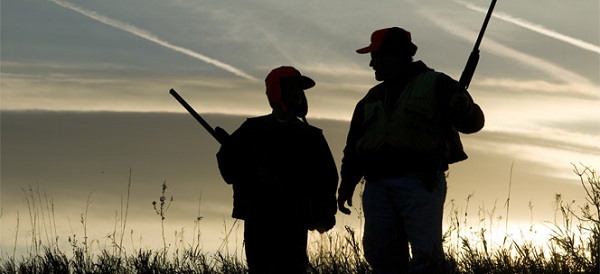
 2025 Federal Election22 hours ago
2025 Federal Election22 hours agoCarney needs to cancel gun ban and buyback



